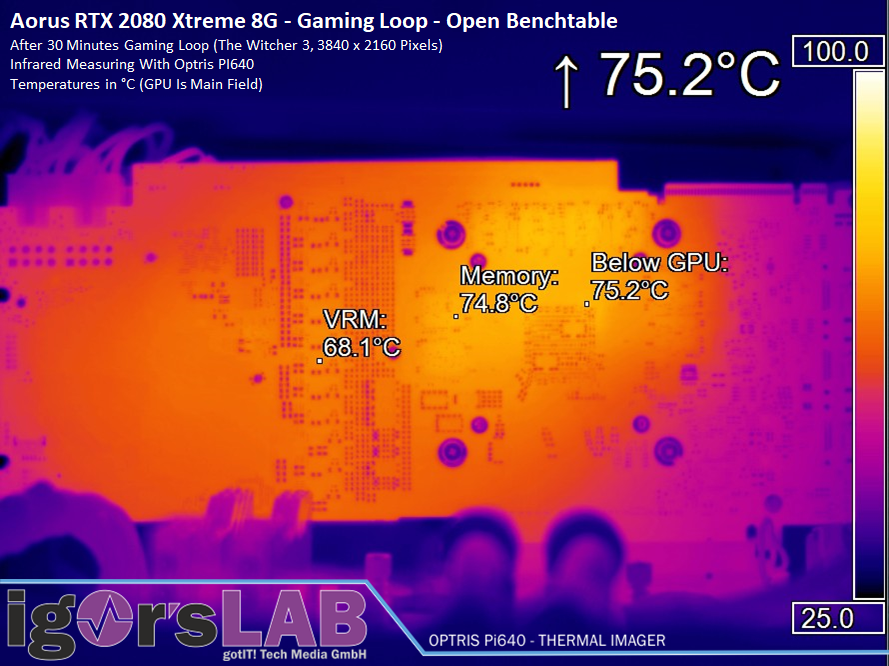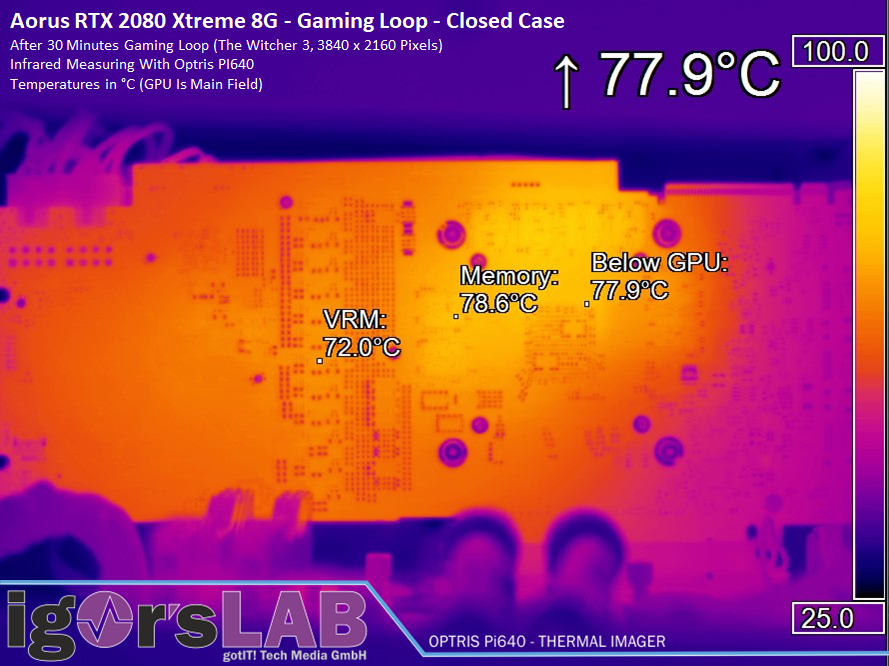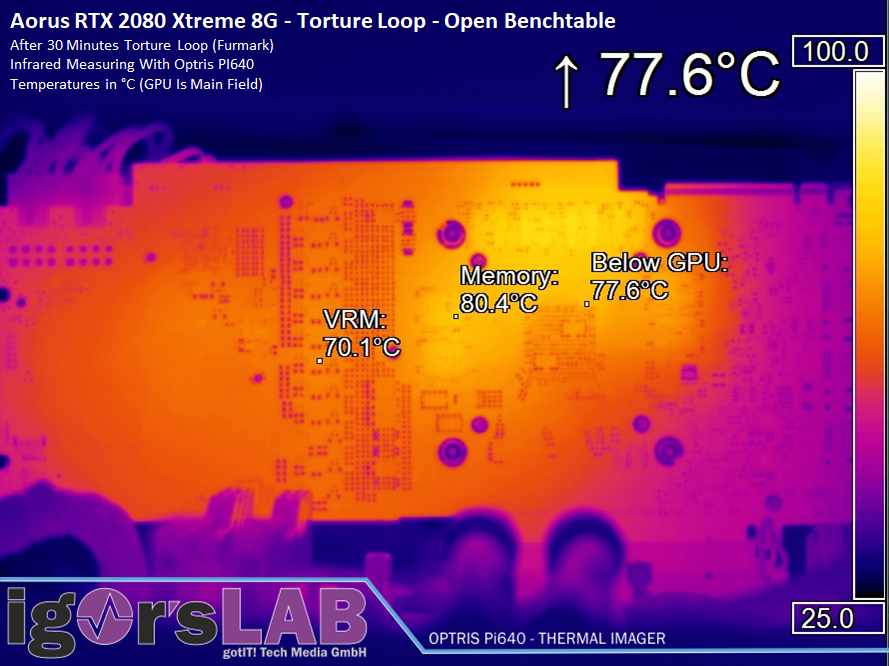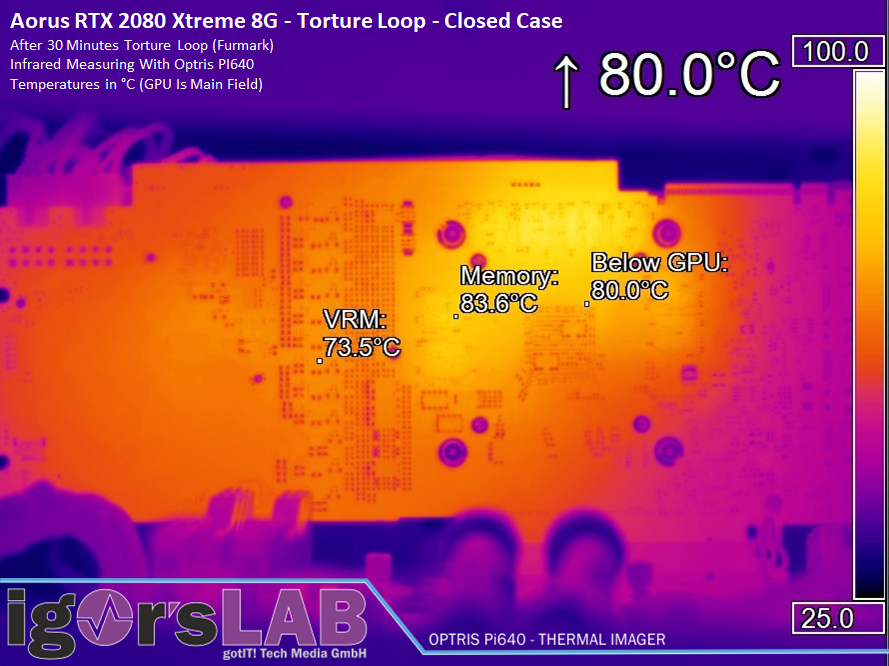Temperature gradients and boost clock in detail
The cooler does its name well and keeps the card quite cool. After all, 72°C in open construction and a maximum of 75° in the closed housing are now nothing to scare you. The higher Power Target ex works ensures that the clock still plays along quite well. The Founders Edition is slower and, above all, a little hotter.
And now the whole thing again in sober numbers in table form:
| Initial Aorus RTX 2080 Xtreme |
Final value Aorus RTX 2080 Xtreme |
Final value GeForce RTX 2080 Founders Edition |
|
|---|---|---|---|
| Open Benchtable | |||
| GPU Temperatures |
34 °C | 75 °C |
75°C |
| GPU clock | 2025 MHz | 1935 MHz |
1815 MHz |
| Ambient temperature | 22 °C | 22 °C | 22°C |
| Closed Case | |||
| GPU Temperatures |
36 °C | 78 °C |
75°C |
| GPU clock | 2010 MHz | 1920/1935 MHz |
1800 MHz |
| Air temperature in the housing | 25°C | 44°C | 43°C |
Board Analysis: Infrared Images
The following image gallery shows all infrared images for the gaming and the torture loop in the open structure and in the closed case. The differences are visible, but the cooler still acts quite confidently, because it is not so much hotter in the end. As with the Founders Edition, the problem zone is more about memory than GPU and Power Stages.
Since the memory modules are also indirectly cooled via the backplate, they are of course a little cooler when the backplate is mounted. Test measurements with mounted backplate and thermal sensors revealed a delta of up to 3°C at the bottom of the board. However, how much of this really arrives at the top of the modules can only be guessed at.




By the way, it is nice to see on all pictures that the thermal pads for the VRM and the PWM controller are superfluous. that is exactly what Aorus has avoided.

































Kommentieren